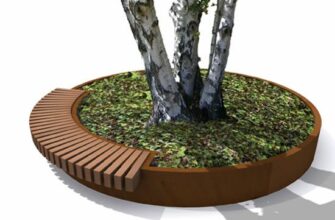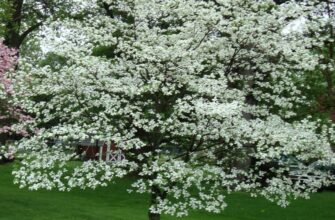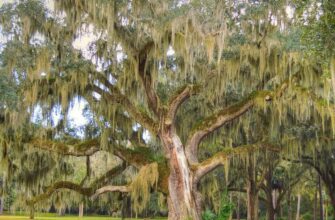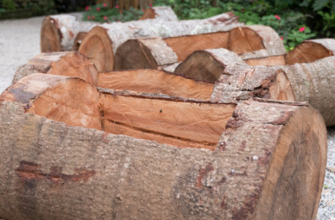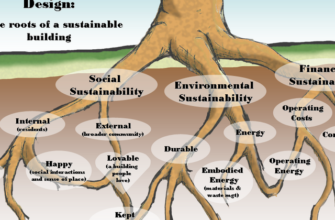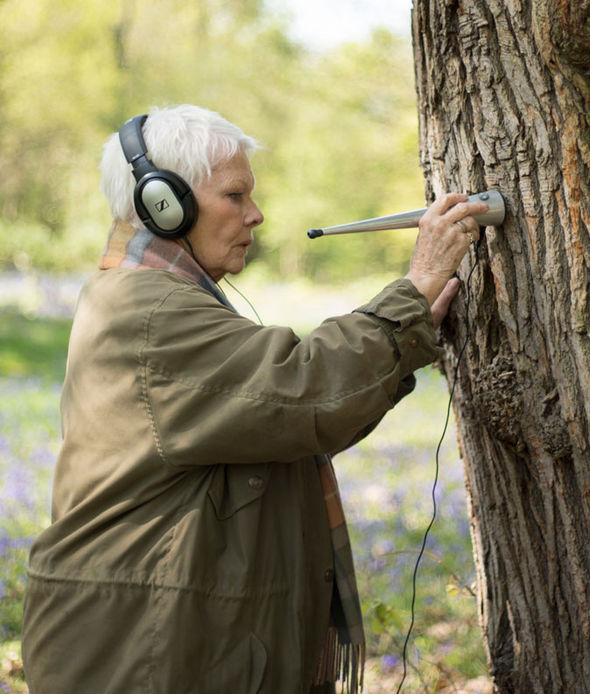
- A Lifelong Passion for Trees
- Discovering the Beauty of Trees
- Understanding the Importance of Tree Conservation
- Exploring the Fascinating World of Tree Species
- Planting Trees for a Greener Future
- The Role of Trees in Ecosystems
- Preserving Ancient Trees: Guardians of History
- The Art of Tree Pruning and Shaping
- How Trees Benefit Human Health and Well-being
- Creating a Tree-Friendly Urban Environment
- Tree Planting Initiatives: Making a Difference
- The Symbolism of Trees in Different Cultures
- Protecting Trees from Disease and Pests
- The Wisdom of Trees: Lessons from Nature
- Tree Canopy: A Natural Shield Against Climate Change
- Tree Identification: A Guide for Tree Enthusiasts
- Preserving Trees in the Face of Deforestation
A Lifelong Passion for Trees
For as long as I can remember, I have been captivated by the beauty and majesty of trees. Their towering presence, graceful branches, and vibrant foliage have always held a special place in my heart. From a young age, I found solace and inspiration in the shade of their leafy canopies, and I knew that my life would be forever intertwined with these magnificent beings.
My passion for trees has only grown stronger over the years. I have dedicated my life to understanding and nurturing these natural wonders. Through countless hours of research and hands-on experience, I have developed a deep appreciation for their ecological importance and the role they play in sustaining life on our planet.
As I have delved deeper into the world of trees, I have come to realize that they are not just silent observers of our lives, but active participants in our well-being. They purify the air we breathe, provide habitat for countless species, and even contribute to our mental and physical health. It is this intricate web of connections that drives my passion and fuels my desire to protect and care for trees.
Discovering the Beauty of Trees
From a young age, I have had a lifelong fascination with trees. Their majestic presence and intricate beauty have always captivated me. Whether it be the vibrant colors of their leaves in the fall or the delicate blossoms that adorn their branches in the spring, trees have a unique ability to inspire awe and wonder.
As I grew older, my love for trees only deepened. I began to explore different types of trees and learn about their characteristics and significance. I discovered that each tree has its own story to tell, with its growth rings acting as a record of its history and experiences.
One of the most fascinating aspects of trees is their role in the ecosystem. Trees provide shelter and food for a variety of animals, and their roots help stabilize the soil and prevent erosion. They also play a vital role in the carbon cycle, absorbing carbon dioxide from the atmosphere and releasing oxygen through photosynthesis.
Through my exploration of trees, I have come to appreciate the interconnectedness of all living things. Trees are not just solitary beings, but rather part of a complex web of life. They are a reminder of the beauty and resilience of nature, and the importance of preserving and protecting our environment.
Understanding the Importance of Tree Conservation
In today’s world, trees play a crucial role in maintaining the delicate balance of our ecosystem. Understanding the importance of tree conservation is essential for the preservation of our planet’s natural resources and the well-being of future generations.
Trees are not only beautiful and majestic, but they also provide numerous benefits to both humans and wildlife. They act as natural air purifiers, absorbing carbon dioxide and releasing oxygen, thus helping to combat climate change. Additionally, trees provide shade, reducing the need for energy-consuming air conditioning, and they help to prevent soil erosion by stabilizing the ground with their extensive root systems.
Conserving trees is not just a matter of environmental responsibility; it is also a matter of personal passion. Many individuals have developed a deep love and appreciation for trees and the role they play in our lives. This passion drives them to take action, whether it be through tree planting initiatives, advocating for tree preservation laws, or supporting organizations dedicated to tree conservation.
Furthermore, tree conservation is closely tied to the preservation of biodiversity. Trees provide habitats for countless species of plants, animals, and insects, many of which are vital for pollination and the overall health of our ecosystems. By protecting and preserving trees, we are ensuring the survival of these diverse ecosystems and the countless species that depend on them.
Education and awareness are key in understanding the importance of tree conservation. By learning about the benefits of trees and the threats they face, individuals can make informed decisions and take action to protect and preserve these invaluable resources. Whether it is by supporting local tree planting initiatives, participating in community clean-up events, or simply planting a tree in your own backyard, everyone can contribute to the conservation efforts and help ensure a greener and more sustainable future.
Exploring the Fascinating World of Tree Species
Passion for trees is a lifelong pursuit for many nature enthusiasts. The world of tree species is vast and diverse, offering an incredible array of shapes, sizes, and colors. From towering giants like the sequoias to delicate flowering trees like the cherry blossoms, each species has its own unique characteristics that make it fascinating to explore.
One of the most intriguing aspects of tree species is their ability to adapt and survive in different environments. Some trees have developed specialized root systems that allow them to thrive in challenging conditions, such as the mangrove trees that can grow in saltwater marshes. Others have evolved to withstand extreme temperatures, like the bristlecone pines that can endure freezing cold and scorching heat.
The diversity of tree species also extends to their ecological roles. Trees play a crucial role in maintaining the balance of ecosystems by providing habitat for a wide variety of organisms. They serve as homes for birds, insects, and mammals, and their leaves, flowers, and fruits provide food and shelter for many species. Additionally, trees contribute to the production of oxygen and the absorption of carbon dioxide, helping to mitigate climate change.
Exploring the fascinating world of tree species can be a lifelong journey filled with discovery and wonder. Whether it’s learning about the ancient trees that have stood the test of time or discovering newly discovered species in remote rainforests, there is always something new to learn and appreciate. So, let your passion for trees guide you on a journey of exploration and appreciation for the majesty of nature.
Planting Trees for a Greener Future
With a lifelong passion for trees, I have dedicated my life to nurturing nature’s majesty by planting and caring for trees. Trees are not only beautiful and majestic, but they also play a vital role in our ecosystem. They help to purify the air, provide habitat for wildlife, prevent soil erosion, and contribute to the overall health of our planet.
Planting trees is not just a hobby for me, it is a way of life. I believe that by planting trees, we are investing in a greener future for ourselves and future generations. Each tree that I plant is a small step towards creating a more sustainable and balanced environment.
When it comes to choosing which trees to plant, I am meticulous in my selection. I consider factors such as the tree’s adaptability to the local climate, its growth rate, and its ability to provide shade and shelter. I also take into account the specific needs of the area, such as soil type and water availability.
To ensure the success of my tree plantings, I follow a careful planting and care process. This includes proper site preparation, planting at the right time of year, and providing adequate water and nutrients. I also monitor the trees regularly to detect any signs of disease or pests and take appropriate action to protect their health.
Planting trees is not just about the immediate benefits they provide, but also about the long-term impact they have on the environment. As the trees grow and mature, they will continue to provide shade, absorb carbon dioxide, and release oxygen. They will also serve as a habitat for birds, insects, and other wildlife, contributing to the biodiversity of the area.
In conclusion, planting trees is a lifelong passion of mine because I believe in the power of trees to create a greener future. By carefully selecting and caring for trees, we can make a positive impact on our environment and leave a legacy for generations to come.
The Role of Trees in Ecosystems
Trees play a vital role in maintaining the balance and health of ecosystems. Their lifelong presence and the passion they inspire in nature enthusiasts are a testament to their importance.
1. Oxygen Production: One of the most crucial roles trees play in ecosystems is their ability to produce oxygen. Through the process of photosynthesis, trees absorb carbon dioxide and release oxygen, providing the essential element for all living organisms.
2. Habitat and Biodiversity: Trees serve as habitats for a wide variety of organisms, including birds, insects, and mammals. They provide shelter, food, and nesting sites, contributing to the overall biodiversity of an ecosystem. The intricate web of life that exists within tree canopies and their surrounding areas is a testament to their significance.
3. Soil Conservation: The roots of trees help prevent soil erosion by holding the soil in place. This is especially important in areas with steep slopes or vulnerable soil conditions. Trees also contribute to the fertility of the soil by adding organic matter through leaf litter and fallen branches.
4. Climate Regulation: Trees play a critical role in regulating the climate by absorbing carbon dioxide, a greenhouse gas that contributes to global warming. They act as carbon sinks, storing carbon in their trunks, branches, and leaves, thus helping to mitigate the impacts of climate change.
5. Water Cycle: Trees play a crucial role in the water cycle by absorbing water through their roots and releasing it into the atmosphere through a process called transpiration. This helps regulate the flow of water, prevents flooding, and contributes to the overall health of ecosystems.
6. Aesthetic and Recreational Value: In addition to their ecological roles, trees also have aesthetic and recreational value. They enhance the beauty of landscapes, provide shade, and offer a peaceful environment for outdoor activities such as picnics, hiking, and camping.
7. Economic Importance: Trees have significant economic value as well. They provide timber for construction, wood for fuel, and various forest products. Additionally, forests contribute to tourism and recreation industries, generating revenue and employment opportunities.
In conclusion, trees are not just a lifelong passion for nature enthusiasts, but they also play a vital role in maintaining the balance and health of ecosystems. Their oxygen production, habitat provision, soil conservation, climate regulation, water cycle regulation, aesthetic and recreational value, and economic importance make them indispensable components of our natural world.
Preserving Ancient Trees: Guardians of History
A lifelong passion for trees has led many individuals and organizations to dedicate themselves to preserving ancient trees, recognizing their importance as guardians of history. These majestic beings have stood tall and witnessed the passing of time, silently carrying the stories of the past within their rings.
Ancient trees hold a wealth of knowledge, serving as living history books that offer glimpses into the past. Their growth rings can reveal information about climate conditions, environmental changes, and even human activity that occurred centuries ago. Preserving these trees is crucial for preserving our understanding of history and the natural world.
Guardians of history, ancient trees serve as reminders of our connection to the land and the importance of conservation. They provide habitats for countless species of plants and animals, contributing to the overall biodiversity of an area. By protecting these trees, we are not only preserving their own beauty and grandeur, but also safeguarding the ecosystems they support.
Preservation efforts for ancient trees involve a combination of scientific research, conservation practices, and public awareness campaigns. Experts work tirelessly to study and document these trees, identifying their unique characteristics and ensuring their long-term survival. This knowledge is then shared with the public, raising awareness about the significance of ancient trees and the need to protect them.
In conclusion, preserving ancient trees is a vital task that allows us to honor the past, learn from it, and ensure a sustainable future. By recognizing these trees as guardians of history, we can inspire a sense of awe and appreciation for the natural world, motivating individuals and communities to take action in their preservation.
The Art of Tree Pruning and Shaping
Pruning and shaping trees is not just a simple task, but rather an art that requires a lifelong passion for trees and a deep understanding of their growth patterns. It is a delicate process that involves carefully removing certain branches to enhance the overall health, structure, and aesthetics of the tree.
Tree pruning is essential for maintaining the health and vitality of trees. By removing dead, diseased, or damaged branches, it helps prevent the spread of diseases and insects, allowing the tree to thrive. Additionally, pruning promotes air circulation and sunlight penetration, which are crucial for the tree’s growth and development.
Shaping trees, on the other hand, involves guiding their growth in a specific direction to achieve a desired form or silhouette. This can be done through selective pruning and training techniques. Shaping trees not only enhances their visual appeal but also ensures they fit harmoniously within their surroundings.
There are different pruning and shaping techniques that arborists use, depending on the type of tree and the desired outcome. These techniques may include crown thinning, crown reduction, crown raising, and crown restoration. Each technique requires precision and expertise to achieve the desired results without causing harm to the tree.
Overall, the art of tree pruning and shaping requires a deep appreciation for the beauty and majesty of trees. It is a lifelong passion that combines scientific knowledge with artistic skill to create stunning landscapes and maintain the health and vitality of our natural surroundings.

How Trees Benefit Human Health and Well-being
Throughout a lifelong journey, trees have played a vital role in enhancing human health and well-being. Their presence in our surroundings has numerous benefits that go beyond their aesthetic appeal.
1. Improving air quality: Trees act as natural air filters, absorbing harmful pollutants and releasing oxygen. This process helps to purify the air we breathe, reducing the risk of respiratory diseases and improving overall lung function.
2. Enhancing mental well-being: Being surrounded by trees has a calming and soothing effect on our minds. Spending time in nature has been proven to reduce stress, anxiety, and depression, promoting mental well-being and improving cognitive function.
3. Boosting physical health: Trees provide shade, which protects us from harmful UV rays and reduces the risk of skin cancer. Additionally, spending time outdoors in green spaces encourages physical activity, which is essential for maintaining a healthy lifestyle.
4. Creating a sense of community: Trees bring people together by creating inviting spaces for social interaction. Parks and tree-lined streets provide opportunities for community gatherings, fostering a sense of belonging and connection among individuals.
5. Supporting wildlife: Trees serve as habitats for various species, supporting biodiversity and ecosystem balance. By preserving and planting trees, we contribute to the well-being of countless animal species and maintain the delicate ecological balance.
6. Improving water quality: The roots of trees help to prevent soil erosion and filter rainwater, improving the quality of water in rivers and streams. This, in turn, benefits both human and aquatic life, ensuring a sustainable water supply.
7. Reducing noise pollution: Trees act as natural sound barriers, absorbing and deflecting noise from busy streets and highways. This helps to create a quieter and more peaceful environment, promoting better sleep and overall well-being.
In conclusion, trees play a crucial role in promoting human health and well-being. Their lifelong presence in our lives brings a multitude of benefits, from improving air quality to enhancing mental well-being. It is important to recognize and appreciate the value of trees in nurturing nature’s majesty and ensuring a healthier future for generations to come.
Creating a Tree-Friendly Urban Environment
In order to foster a lifelong love and appreciation for trees, it is essential to create a tree-friendly urban environment. This can be achieved through various means, such as implementing tree planting initiatives, promoting sustainable landscaping practices, and raising awareness about the importance of trees in urban areas.
One way to create a tree-friendly urban environment is by encouraging the planting of trees in public spaces, such as parks, streets, and plazas. This not only enhances the aesthetic appeal of the city but also provides numerous benefits. Trees help to improve air quality by absorbing pollutants and releasing oxygen, they provide shade and reduce the urban heat island effect, and they offer habitat for wildlife.
Another important aspect of creating a tree-friendly urban environment is promoting sustainable landscaping practices. This includes using native tree species, which are better adapted to the local climate and require less maintenance. It also involves implementing proper tree care techniques, such as regular pruning and mulching, to ensure the health and longevity of the trees.
Raising awareness about the importance of trees in urban areas is also crucial. This can be done through educational campaigns, community events, and partnerships with local organizations. By highlighting the many benefits of trees, such as their ability to mitigate climate change, reduce stormwater runoff, and improve mental well-being, individuals and communities can be inspired to take action and support tree-friendly initiatives.
In conclusion, creating a tree-friendly urban environment is essential for nurturing a lifelong passion for trees. By planting trees in public spaces, promoting sustainable landscaping practices, and raising awareness about the importance of trees, we can ensure that future generations will continue to appreciate and protect these magnificent creatures that provide us with so many benefits.
Tree Planting Initiatives: Making a Difference
Passionate individuals and organizations around the world are taking action to make a difference in the preservation and growth of our beloved trees. Through tree planting initiatives, they are contributing to the restoration of our natural landscapes and the protection of our environment.
These initiatives aim to combat deforestation, urbanization, and climate change by planting and nurturing trees in various locations. By doing so, they help to improve air quality, reduce soil erosion, and provide habitats for wildlife. These efforts also contribute to the beautification of cities and communities, creating a more pleasant and sustainable living environment for all.
Tree planting initiatives can take many forms. Some organizations focus on large-scale reforestation projects, planting thousands or even millions of trees in areas that have been heavily deforested. Others focus on urban tree planting, bringing greenery and shade to city streets and parks. There are also community-based initiatives that encourage individuals to plant trees in their own backyards or participate in local tree planting events.
These initiatives not only have a positive impact on the environment but also provide opportunities for education and community involvement. They raise awareness about the importance of trees and the role they play in our ecosystem. They also bring people together, fostering a sense of community and shared responsibility for the environment.
By supporting tree planting initiatives, we can all contribute to the preservation and growth of trees, ensuring a greener and healthier future for generations to come. Whether it’s through volunteering, donating, or simply planting a tree in our own backyard, we can all make a difference in nurturing nature’s majesty.
The Symbolism of Trees in Different Cultures
In many cultures, trees have been revered and symbolized various aspects of life and spirituality. Their lifelong presence and majestic stature make them powerful symbols in different mythologies and belief systems.
For example, in Celtic culture, the oak tree is seen as a symbol of strength, endurance, and wisdom. Its deep roots and wide branches represent stability and connection with the earth, while its leaves symbolize knowledge and protection. The oak is often associated with the Celtic god of thunder and lightning, Thor, and is considered a sacred tree.
In Japanese culture, the cherry blossom tree holds great significance. It is a symbol of beauty, transience, and the fleeting nature of life. The cherry blossom season, known as “hanami,” is celebrated with picnics and festivals, where people gather to appreciate the delicate beauty of the blossoms. The cherry blossom tree also represents renewal and the cycle of life.
In Norse mythology, the world tree, Yggdrasil, is a central symbol. It is believed to be the tree that connects the nine realms of existence, including Asgard (the realm of the gods) and Midgard (the realm of humans). Yggdrasil is seen as a source of life and knowledge, providing nourishment and shelter to all living beings. Its branches and roots symbolize the interconnectedness of all things.
These are just a few examples of how trees have been symbolized in different cultures. Their symbolism reflects the deep connection between humans and nature, and the profound impact that trees have on our lives and beliefs.
Protecting Trees from Disease and Pests
As a lifelong tree enthusiast, I have always been passionate about preserving the health and beauty of trees. One of the biggest threats to trees is disease and pests, which can cause significant damage if left unchecked.
To protect trees from disease, it is important to identify and treat any signs of infection early on. Regular inspections and monitoring can help detect diseases such as oak wilt, Dutch elm disease, and powdery mildew. Prompt action, such as pruning infected branches or applying appropriate fungicides, can help prevent the spread of disease and save the tree.
Pests, such as insects and rodents, can also pose a significant threat to trees. They can cause damage by feeding on leaves, stems, and roots, as well as transmitting diseases. Implementing preventive measures, such as regular tree maintenance and using insecticides or repellents when necessary, can help protect trees from pest infestations.
In addition to proactive measures, it is important to promote overall tree health through proper care and maintenance. This includes providing adequate water, nutrients, and sunlight, as well as regular pruning to maintain the tree’s structure and remove any dead or diseased branches. A healthy tree is more resilient to diseases and pests, making it less susceptible to damage.
Overall, protecting trees from disease and pests requires a combination of vigilance, knowledge, and proactive measures. By taking the necessary steps to identify and treat diseases early on, implementing preventive measures against pests, and promoting overall tree health, we can ensure the longevity and majesty of these invaluable natural resources.
The Wisdom of Trees: Lessons from Nature
Trees have always held a special place in my heart. From a young age, I developed a deep passion for their beauty and the sense of peace they bring. As I spent more time in nature, I began to realize that trees have so much to teach us about life and ourselves.
One of the lessons I have learned from trees is the importance of staying rooted. Just like trees, we need a strong foundation to thrive. Trees anchor themselves firmly in the ground, allowing them to withstand storms and harsh weather. In our own lives, it is crucial to have a sense of purpose and a strong support system that keeps us grounded.
Another lesson we can learn from trees is resilience. Trees endure all seasons, from the scorching heat of summer to the bitter cold of winter. They shed their leaves and adapt to changing conditions. Similarly, we must learn to adapt to the challenges that life throws at us, and find the strength within ourselves to keep going.
Furthermore, trees teach us the value of patience. It takes years for a tiny seed to grow into a majestic tree. Trees do not rush their growth; they take their time, slowly but surely reaching towards the sky. In our fast-paced world, it is important to remember that great things take time, and that patience is a virtue.
The wisdom of trees goes beyond these lessons. They provide us with shade, oxygen, and a sanctuary for countless creatures. They remind us of the interconnectedness of all living things and the importance of preserving our natural environment. So let us nurture our passion for trees and learn from their wisdom, for they have so much to teach us about life and the world we live in.
Tree Canopy: A Natural Shield Against Climate Change
One of the most powerful tools we have in the fight against climate change is right in front of us: trees. With their ability to absorb carbon dioxide and release oxygen, trees play a crucial role in mitigating the effects of climate change. Their canopy acts as a natural shield, protecting the Earth from the harmful impacts of greenhouse gases.
The passion for trees and their role in combating climate change is growing among environmentalists and scientists. Research has shown that increasing tree canopy coverage can help to cool urban areas, reduce energy consumption, and improve air quality. Trees provide shade, which can lower temperatures in cities and reduce the need for air conditioning. They also trap pollutants and filter the air, making it cleaner and healthier for everyone.
Not only do trees help to combat climate change, but they also provide numerous other benefits. They support biodiversity by providing habitat and food for a wide range of species. Trees help to prevent soil erosion and regulate water cycles, reducing the risk of floods and droughts. They also contribute to the beauty and aesthetic value of our surroundings, making our communities more pleasant and livable.
It is crucial to prioritize the preservation and expansion of tree canopy coverage in both urban and rural areas. This can be achieved through initiatives such as tree planting campaigns, urban forestry programs, and sustainable land management practices. By nurturing our passion for trees and recognizing their vital role in combating climate change, we can create a greener and more sustainable future for generations to come.
Tree Identification: A Guide for Tree Enthusiasts
If you have a passion for trees, you know that there is something truly magical about these majestic beings. Their towering heights, graceful branches, and vibrant foliage captivate our senses and inspire a deep connection to nature. But how well do you know the different species of trees? If you’re eager to learn more and expand your knowledge, this guide is here to help.
Tree identification is a skill that every tree enthusiast should possess. Being able to identify different tree species not only enhances your understanding and appreciation of these magnificent plants, but it also allows you to contribute to their conservation and protection. By recognizing the unique characteristics of each tree, you can better understand their ecological roles, identify potential threats or diseases, and make informed decisions about their care.
So, where do you start when it comes to tree identification? The first step is to familiarize yourself with the key features that distinguish one tree species from another. These features can include the shape and arrangement of leaves, the texture and color of bark, the presence of fruit or flowers, and the overall size and shape of the tree. By observing these characteristics and comparing them to a field guide or online resource, you can begin to narrow down the possibilities and make an educated guess about the tree’s identity.
Another helpful tool for tree identification is understanding the geographical distribution of different tree species. Trees have adapted to thrive in specific climates and regions, and their presence or absence can provide valuable clues about their identity. By learning about the native tree species in your area and their preferred habitats, you can narrow down the options and increase your chances of correctly identifying a tree.
Remember, tree identification is a lifelong journey. Even the most experienced tree enthusiasts continue to learn and discover new species throughout their lives. So, embrace your passion for trees, keep exploring, and let the wonders of nature unfold before your eyes.
Preserving Trees in the Face of Deforestation
As someone with a lifelong passion for trees, I am deeply concerned about the issue of deforestation. Trees are not only majestic and beautiful, but they also play a vital role in our ecosystem. They provide us with oxygen, regulate the climate, and support countless species of plants and animals. It is crucial that we take action to preserve and protect our trees in the face of deforestation.
One of the most effective ways to preserve trees is through reforestation efforts. By planting new trees in areas that have been deforested, we can help restore ecosystems and prevent further loss of biodiversity. Reforestation also helps to combat climate change by absorbing carbon dioxide from the atmosphere and reducing greenhouse gas emissions.
In addition to reforestation, it is important to promote sustainable logging practices. This means harvesting trees in a way that minimizes damage to the surrounding ecosystem and ensures the long-term health and viability of the forest. Sustainable logging practices include selective cutting, where only mature trees are harvested, and replanting to replace the trees that have been cut down.
Education and awareness are also key in preserving trees. By educating people about the importance of trees and the devastating effects of deforestation, we can inspire action and change. This can be done through school programs, community events, and public awareness campaigns. It is crucial that we all understand the value of trees and the urgent need to protect them.
Lastly, governments and international organizations play a crucial role in preserving trees. They can implement policies and regulations that promote sustainable forestry practices, provide funding for reforestation efforts, and enforce laws against illegal logging. Collaboration between gover

